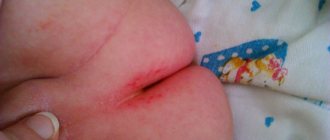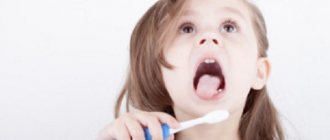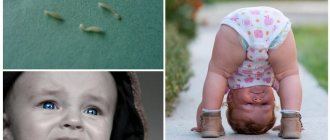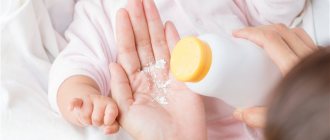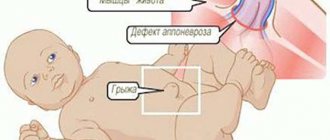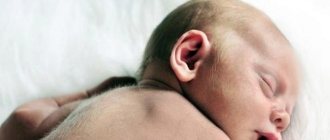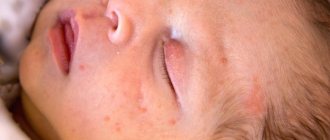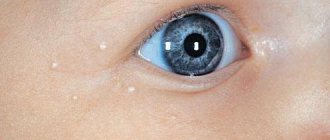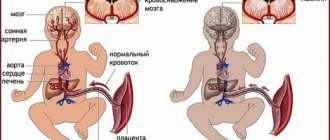Entry published by *Anastasia* · May 5, 2012
2,794 views
Girls who have encountered this need your help. My daughter is 3 weeks old. All this time, since birth, she has had the same stool - separately yellow liquid and small yellow lumps, as if undigested, the color seems to be good, bright yellow.
At the maternity hospital they said that this was within the norm. He poops well 2-3 times a day. She also constantly farts and jumps up a little bit, and liquid constantly leaks out a little at a time, literally every 5 minutes. This irritates her butt, she has developed pimples around her butt and now even the upper skin around her anus has peeled off and she is in pain. Either diaper rash or just irritation.
We tried Bepanten, Desitin and starch, nothing helps, it only gets worse. Now I just bought zinc paste at the pharmacy, I’ll try it.
We've been going without diapers for 4 days now, even at night, after each of these jumps I try to wipe my butt with some water, but of course I still can't keep my butt dry, poop constantly leaks out drop by drop.
The pediatrician said that we have terrible diarrhea, that at 3 weeks the stool should no longer be liquid and without lumps, and most likely it is dysbacteriosis or some kind of infection. He prescribed Enterofuril for us.
Of course, we will test for dysbacteriosis. But today the holidays have begun, and this analysis takes about 7-8 days everywhere. During this time, our butt will finally become inflamed (((
And another pediatrician says that such stool is within the normal range for children under one month old.
I don’t know what to do, what else to try?
Has anyone had this? Is it an infection or did the stool return to normal on its own?
We are breastfeeding, but I pump and bottle feed (it just so happens). I express one breast at one feeding, and almost completely, that is, she receives both fore and hind milk.
I follow a diet. I eat very few foods, such as buckwheat, sour milk, boiled beef and the like.
She has a good appetite and is gaining weight well.
Sorry if there are a lot of details.
I really hope that someone has had this and can give me some advice. I can’t look at my daughter’s sore butt anymore, I feel so sorry for her.
Diarrhea causes irritation on the bottom. Irritation in a child after diarrhea
Diarrhea is a fairly common phenomenon in children, most of whom very often suffer from it with irritation on the bottom. In this article we will talk about ways to deal with these irritations and how to prevent them.
So, if a child’s bottom is all red and, possibly, red genitals, then the first thing to do is to apply baby or any hypoallergenic moisturizer around this redness. During this disease, you should not show off without panties or without pants. You should not use a diaper, since most often it is because of it that this irritation occurs. The fact is that diapers do not allow the baby's skin to breathe.
Very often, a calendula bath can relieve irritation in a child after diarrhea; it can be used every time during bathing. Washing with chamomile infusion will also be useful, as it will protect the baby’s mucous membranes from irritation.
What creams and solutions can be used for irritation?
Bepanten and Destin creams perfectly relieve irritation. Ordinary zinc paste also helps well, which is recognized as a traditional way to relieve irritation not only with diarrhea in babies, but also in many other cases of problems with the epidermis.
If it so happens that you cannot do without a diaper, then you should use any diaper cream that will dry and soothe the inflamed skin. It should be applied in a thick layer.
If a child has irritation on the bottom and genitals due to diarrhea, then in addition to all of the above, they should be washed with a soda solution. To do this, mix one teaspoon of baking soda and a glass of boiled water. A combination of streptocidal liniment and zinc paste will also be a salvation for the butt.
Many mothers considered the “Drapolen” cream to be a good cream, after treatment with which you can wash your butt
Source
Irritation on a child's bottom due to diarrhea
Hello, please tell me, could it be teeth? We are 8 months old, the child has had green diarrhea for three days now, sometimes like applesauce, brown, no fever and eats normally, nothing new was given from complementary foods, it started suddenly, the child is active. Plus, severe irritation has appeared, I don’t know what to apply, so far I’ve applied zinc ointment and given medications prescribed by the doctor.
Hello everyone, I don’t know what to do and how to help my child. We are 8 m. And diarrhea started two days ago, green in color, without fever, she eats well as before, she didn’t give anything new, I don’t understand the reason. I went to the doctor and prescribed medication, but I’m sure there’s no effect yet, we tested the feces and are waiting for an answer. Plus, the child developed a rash and irritation on his bottom. what to do, who can advise what, thanks in advance.
temperature 38, green diarrhea. the whole butt is irritated. The child is in a normal mood. teeth or something? py.sy. I’m waiting for the doctor, but while she’s not there I decided to ask you too.
Dear girls, how to restore the intestinal microflora. You can give smecta to your child. Yesterday we stopped taking antibiotics, diarrhea came and a rash, poor butt - terrible irritation on the hole and all around in diameter. I can’t wash it, I’m crying, anointing is also a problem. Yesterday we were in the hospital again, they told us to take antibiotics, and, wow, our inflammation miraculously went away, that’s how medicine is.
-Electronic thermometer with flexible end+ -Nasal aspirator – Otrivin, and replaceable nozzles. -Nasal drops – Aquamoris for children, Nazivin up to one year. -Suppositories for constipation: glycelax - microlax enemas -Syrup, suppositories for temperature: nurofen children's syrup +, tsifekon (depends on age) -Drops for colic: sub simplex for children or plantex powder (expensive) -for allergies: finistil drops, suprastin - peroxide and brilliant green - drapolene cream (for irritation) + - Pumerlan, bepantem (for your chest) – bepa
Source
Diarrhea and irritation on the bottom.
Hello girls. I was urgently admitted to the hospital with acute appendicitis and I was there for a week. My daughter was 6 months old, before the hospital I breastfed her, and when I was admitted to the hospital she was suddenly transferred to formula. A week later I was discharged and when I came home, it turned out that my daughter had already had diarrhea for three days, and she was pooping every half hour or hour and a little bit and almost water, and she was all red and red, all in irritation, what should she It hurts when I touch her. What could this be from? How can I get rid of this? I'm guessing maybe it's an allergy to the mixture?
From the fact that pooping often can cause redness. Wash it off after each poop and apply bepanthen. Well, the diarrhea is clearly from a sudden transition to a different diet.
I can’t say anything about feeding. But it’s good to smear the butt with Weleda cream under the diaper. It removes redness almost instantly.
You need to give your daughter a lot to drink so that dehydration does not occur, and be sure to show her to the doctor, or at least get a consultation over the phone.
Take charge of your child’s nutrition yourself. If it is possible to return GW, return it; if not, select a mixture. And no juices or complementary foods until the stool improves.
Give your child Smecta, it helps a lot with diarrhea. dilute 1 pack per 50 ml. water and give it in 3 doses per day, it helped us, and anoint your butt with Desitin or Bepanten. Get well.
Ask your doctor for a prescription for Shnyrev Pasta. Super thing, prepared according to prescription in pharmacies. At one time we had the same thing from diarrhea; at that time we were in the hospital with an intestinal infection, where they gave it to us. Everything passed in 3 days
Girls, New Year is just around the corner, what doctors. And I was only discharged yesterday. We have to somehow cope on our own, but once the hospitals start working, we will definitely show up.
I won’t say why the diarrhea is, but the irritation on the butt is definitely due to diarrhea. Mine have
Source
Irritation on a child's bottom
Modern mothers can no longer imagine fully caring for their baby after birth without using diapers. The most common problem associated with them is the appearance of irritation on the child’s bottom. This occurs as a result of improper (too long) use or is a manifestation of an allergic reaction.
How to treat sores on the bottom of a newborn
- 01 August
- 0 rating
Babies in their first year of life are more likely to be exposed to various diseases. The child’s immunity is still developing. Therefore, ulcers in infants are not uncommon. It is necessary to learn to distinguish between them and treat them correctly so that the discomfort decreases and your well-being significantly improves.
Mouth ulcer in infant
Due to the increased sensitivity of the baby's oral mucosa, even minor damage to the upper layer of the dermis leads to the appearance of various ulcers. They may vary in size and location.
Ulcers in a baby's mouth can be white or red, with or without purulent exudate. Moreover, they can be placed both on the gums and on the tongue, the inside of the cheeks, lips and palate.
They are very painful and cause incredible discomfort to the child.
White sores in the mouth of a baby: causes
Nothing just appears in the baby’s mucous membrane. White ulcers in the mouth of a baby may have the following causes:
- Stomatitis is a dental disease of a viral or infectious nature. White sores are located on the bright red surface of the mucosa. They appear due to an active inflammatory process. They do not have a specific location. They can “capture” both the entire oral cavity and the corners of the mouth. The baby's mouth hurts and he becomes very irritable.
- Oral candidiasis. In this case, white ulcers in the mouth of a baby have very banal causes - not fully formed immunity. Mother's milk has become an unsurpassed environment for the development of fungal infections and the formation of white plaque in the oral cavity. When it is removed, small spots containing white pus are revealed.
- Thermal or chemical burn. It is formed due to the child’s increased curiosity and his desire to try everything. As a result, drinks or certain medications can cause white sores.
Despite the fact that rashes in the oral cavity seem insignificant, the child suffers from them especially acutely.
Ulcers on the tongue of a baby
They can appear for several reasons. And the main one is stomatitis. In addition, ulcers on a baby's tongue can occur as a result of improper use of a toothbrush. The resulting mechanical damage becomes clogged with various microbes and becomes inflamed. As a rule, it is single.
Ulcer on the gum of a baby
Often the cause is the herpes virus. Small bubbles cover literally the entire oral cavity. Ulcers on the gums of infants are numerous and painful. When they open, they secrete a yellowish exudate. Gradually a small thin crust forms on top of them.
Allergic reactions lead to the fact that at first the ulcer on the baby’s gum is small. But, with an increase in the amount of blood allergen, their number gradually increases and causes unprecedented discomfort. In addition, such allergic rashes can spread throughout the body.
Mouth ulcers in infants: treatment
It must be remembered that treatment for mouth ulcers in infants should be as effective and gentle as possible. This means that drugs should be selected based on the age and size of the affected area.
- Give painkillers. Paracetamol, Ibuprofen, Nurofen will help cope with pain and relieve irritation.
- Use antiseptics to cleanse fungal infections and eliminate purulent discharge: hydrogen peroxide, Miramistin, Chlorhexagin.
- Remove from your diet foods that have a strong taste and contribute to the spread of fungal infections.
- If possible, rinse your child's mouth after every meal.
- Use drugs that have a wound-healing effect: Metrogyl Dental, Solcoseryl paste.
Almost always, such treatment is effective and justified; quite quickly the baby becomes better and the ulcers in infants go away.
Sores on the butt of a baby
In most cases, ulcers on a baby's bottom appear as a result of poor hygiene, loose stools, allergic reactions and elementary heat rash. With the right approach, they quickly dry out, develop a dry crust and the dermis becomes smooth again. In some cases, ulcers on a baby's bottom may appear after taking certain medications.
Causes of ulcers on the bottom of a newborn
Every mother knows perfectly well the causes of ulcers on the bottom of a newborn. These include:
- Prickly heat. White and red bumps with localized irritation.
- Hives. Small red pimples on the butt. They are very itchy and itchy, causing discomfort to the child. They appear due to incorrectly selected hygiene products and medications.
- Fungal infections. They arise due to contact with delicate skin by fungi and infectious microorganisms. They have different appearances: white, red, with and without pus.
- Intertrigo. Appears due to the baby being in a warm and humid environment with periodic friction.
Source: https://papillomnet.ru/papillomy/jazvochki-na-pope-u-novorozhdennogo-kak-lechit.html
Why did the child have diarrhea and a rash on his body?
Panic, confusion and fear for her beloved baby appear in a young mother when she suddenly notices diarrhea and a rash on the child’s body. To figure out whether such symptoms are dangerous or not, consultation and diagnosis of a pediatric specialist is necessary.
Whatever the disease, if a rash appears on the body, this indicates that a painful process has begun in the baby’s blood, and diarrhea can cause a serious infection. In pediatrics, there are no diseases that can be classified as mild if the main symptoms are diarrhea and skin rashes. Each case requires urgent medical attention.
Causes of diarrhea
Diarrhea and skin rashes on a child’s body can be symptoms of various ailments. It is very important to take into account the fact that at each age the same disease can occur differently. If a teenager’s body can cope with it quickly, then the baby will tolerate it much harder. The reason for this is the age characteristics of the child’s body at different stages of development. When diarrhea and rash appear, it is very important to provide the necessary assistance without causing complications.
The most common cause of diarrhea (diarrhea) is E. coli, which affects the child’s body due to poor hygiene: unwashed hands, toys, fruits. The disease may not go away for several days, which, with frequent diarrhea, can cause dehydration and lead to severe consequences. If diarrhea is accompanied by elevated body temperature, vomiting, and there is mucus and blood in the stool, you should urgently call a doctor. The most common cases of such symptoms are hospitalization.
A second, no less rare cause of diarrhea in children is poisoning from stale food. In this case, the blame lies entirely with the
Source
Why sores appear on a baby’s buttocks: how to treat erosion in infants
Children's delicate skin often reacts with redness to various irritants. Sometimes even a different brand of diaper can cause rashes. Any little detail should not be underestimated when it comes to protecting children's epidermis.
Dermatitis
The main causes of rash on the buttocks
Typical reasons why sores appear on a child’s bottom are:
- untimely change of diaper or poor quality of the sorbent in its composition;
- non-compliance with the temperature regime in the room where the child lives;
- violation of the feeding regime.
Pediatricians warn parents that the health of their child’s skin largely depends on the quality of the disposable diaper.
If the mother managed to determine the best brand for herself through trial and error, it is better to stick to her choice and no longer experiment with the delicate baby skin.
It is imperative to change the diaper immediately after the baby has soiled it with feces. For girls, staying in a dirty diaper for a long time can result in inflammation of the genitourinary system.
The room where the child lives should be cool and humid. You cannot warm the room to more than +22˚C. Otherwise, the skin sweats and becomes hot under clothing and in the folds. In the hot season, it is more advisable to place the baby completely naked on a disposable absorbent diaper in order to protect the delicate skin of the buttocks and groin from prickly heat.
Air baths
Formula-fed babies should receive exactly the amount of food indicated on the packaging for their age. If the mother decides that four scoops are not enough for the baby to eat, and gives six, contrary to the instructions, making the mixture sweeter and tastier, the risk of an allergic reaction, which most often manifests itself as rashes on the buttocks and cheeks, will significantly increase.
Attention! The introduction of complementary foods is permissible only after the baby reaches the age of 6 months. Additional sweetening of porridges and compotes with sugar is not allowed, as is the preparation of drinks using condensed milk. Failure to comply with these rules leads to dermatitis.
How to determine the origin of the rash
Cough with wheezing in a child - causes, treatment
A rash that turns into sores on a newborn's bottom should be examined by a doctor. Any disturbances in the condition of children under three months should be accompanied by urgent consultation with a specialist. However, every mother should know how to distinguish contact dermatitis from food allergies.
First of all, you need to determine the location of the rash and correlate it with the events that happened to the mother and child on the day the rash appeared.
The easiest way is to compare two days: the one when the baby was still healthy, with the one when the skin was inflamed. Differences in diet, clothing fabrics and washing method will answer the question.
In addition, you can compare different areas of the child’s skin to determine the diagnosis.
Relationship between the location of the rash and its causes
Places where redness appearsFood allergies Diaper dermatitisMiliaria
| Buttocks, groin | There is | There is | There is |
| Cheeks | There is | ||
| Popliteal cavity area | There is | ||
| Back, shoulders | rarely | There is | |
| Sides | There is | ||
| Armpits and other folds on the body | There is |
Based on the data in the table, we can say that if a child has a red bottom, back and skin in folds on the body, but clean cheeks, this is most likely not related to nutrition. The reason must be sought in the microclimate of the room.
When a baby has red cheeks and buttocks, and crusts are observed behind the knees, this is a typical manifestation of a food allergy, which is often called diathesis.
If the baby has a red bottom and a pale back, the diaper or the mother is to blame for not changing it.
Baby in diaper
Streptoderma
Any damage to the skin, even minor ones, can lead to infection. In order for a harmless prickly heat to turn into a terrible streptoderma lesion, it is enough not to follow the rules of hygiene.
Millions of bacteria live on the skin of every person, the reproduction of which is restrained by the immune system and the barrier function of the skin. As soon as the integrity of the integument is compromised, there is a risk of infection. The most common of them is streptoderma. It can be distinguished from other skin diseases by its typical clinical picture:
- normal redness is first localized on the buttocks and folds;
- one or more pink-red spots appear at the site of the rash, which increase in size over several hours;
- after a short time a transparent bubble appears, a liquid forms inside it, which becomes cloudy after 2 hours;
- in the center of the spot, tissue indentation is visible, and the surface of the bubble takes on the appearance of a multi-layered soft crust and comes off easily;
- the color of the peeling crust can vary from golden to greenish.
A microbe called streptococcus is responsible for the appearance of ulcers on the butt of a baby.
Attention! If measures are not taken in time, ulcers can cover the child’s entire body.
How do they get infected?
The disease has a wide range of damage. If there is not one baby in the family, but twins, streptoderma from one baby will quickly spread to the second. Any skin disorder: diathesis or prickly heat simplifies the infection process.
Even a harmless scratch on the skin is an entry point for streptococcus. Once there, he will instantly multiply his army and spread ulcers throughout the body.
Why is the disease dangerous?
If you contact a pediatrician in a timely manner and promptly prescribe treatment, the wounds on the child’s bottom will disappear in 5-7 days. Based on the fact that streptoderma is the result of the vital activity of streptococcus, the following complications are possible, for the manifestation of which the same streptococcus is responsible:
- scarlet fever;
- guttate psoriasis;
- rheumatism;
- glomerulonephritis;
- myocarditis;
- boils;
- blood poisoning.
Important! With extensive damage to the body, secondary infection with staphylococcus is possible, which is also found on the surface of the skin and mucous membranes, but in small quantities. If staphylococcus gets into a favorable environment organized by streptoderma, wounds will begin to fester.
Streptoderma
How to help your child
First of all, you need to show erosion in the child’s butt and body to a pediatrician as soon as possible. Streptococcus is a microbe, which means you can fight it with an antibiotic. Only a doctor can prescribe the right medicine that will quickly and effectively cope with the disease.
How can you treat wounds at home?
Irritation on a child’s bottom - what to do if the buttocks are red
If the child’s body is affected in a small percentage, the doctor may prescribe an ointment with an antibacterial effect.
Acting locally, it will speed up healing, kill bacteria and prevent infection from spreading further throughout the body.
If a large percentage of the body surface is affected, an oral antibiotic will be prescribed for systemic treatment.
Self-medication in this situation is unacceptable. Without the participation of a doctor, the use of lotions or creams may be ineffective, as a result of which the child will develop scarlet fever or rheumatism.
Preventing diaper rash in babies
Popular pediatrician Evgeny Komarovsky is confident that diaper rash can be easily avoided if you follow a number of rules for caring for an infant:
- cool humid air mode;
- timely water procedures;
- high-quality disposable diaper;
- using baby powder or creams with zinc under the diaper.
Important! It is necessary to lubricate the buttocks and groin area with a cream containing zinc after each bath. It creates an additional reliable barrier against the adverse effects of urine and loose stools.
When bathing your baby, pay special attention to the area between the folds. Dust, food particles and sweat can collect there. Due to poor hygiene of the child, the folds begin to smell bad, itch and bother the baby (this is the result of the active proliferation of pathogenic bacteria, which can lead to the formation of erosions, cracks and ulcers on the body).
Prevention measures
To prevent sores from appearing on the newborn’s bottom, the back does not turn red, and diathesis does not appear, parents must follow a number of rules:
- feed the child only foods approved for complementary feeding, without exceeding dosages and without experimenting with their combination;
- in hot weather, allow the baby to take air baths;
- monitor the cleanliness of the body, do not ignore nightly water procedures;
- cut your baby’s nails on time, as they injure the skin, which increases the risk of developing streptoderma;
- ventilate the room, do not create stuffiness in the nursery;
- wash children's clothes only with a special hypoallergenic detergent;
- choose clothes and bedding only from natural materials, giving preference to cotton.
It is always easier to prevent the development of a disease than to treat a child. Therefore, sensible parents do not hesitate to contact their local pediatrician for clarification. At the first signs of illness, it is wise to call a specialist, since it is much easier to cure a child at an early stage of the disease.
Source: //kpoxa.info/zdorovie-pitanie/yazvochki-pope-novorozhdennogo-lechenie.html
Irritation from feces in a child
At an early age, when a child spends most of his time in a diaper, he may experience irritation on his bottom . Often, such redness can occur from contact of delicate skin with feces. Especially if the baby’s stool was disturbed, then constant exposure could cause the most negative reaction on the skin. Don’t panic right away; you need to understand what to apply and how to treat delicate skin.
Irritation from diarrhea in a child
Until about one year of age, a child’s stool may be loose and this is normal, but it happens that the child clearly has diarrhea. You could introduce a new product into your diet (if breastfeeding) or into your baby’s diet, which became the cause of the stool, but this is not the only possible reason. In general, there are several reasons for bowel dysfunction in a child:
In this case, it is important to exclude anything that affects the process itself and, of course, it is worth addressing the child’s digestion and eliminating the problem. Depending on the cause, you need to either eliminate the allergen, make the transition between feedings calmer, or eliminate diarrhea with the help of special medications. In any case, your pediatrician will help you both choose a medicine for diarrhea and determine what exactly caused it.
How to treat irritation from diarrhea in a child
The very first and correct action in such a situation would be to create conditions under which the child comes into contact with feces for as little time as possible. This can become quite difficult because with diarrhea, the child's frequency of going to the toilet increases significantly. The main thing is that even a small appearance of feces should be eliminated quickly. Perhaps in such a situation it is worth switching from diapers to diapers (you can use disposable diapers) during the daytime, and checking the baby more often at night.
Source
How to help your child
First of all, you need to show erosion in the child’s butt and body to a pediatrician as soon as possible. Streptococcus is a microbe, which means you can fight it with an antibiotic. Only a doctor can prescribe the right medicine that will quickly and effectively cope with the disease.
How can you treat wounds at home?
Irritation on a child’s bottom - what to do if the buttocks are red
If the child’s body is affected in a small percentage, the doctor may prescribe an ointment with an antibacterial effect. Acting locally, it will speed up healing, kill bacteria and prevent infection from spreading further throughout the body. If a large percentage of the body surface is affected, an oral antibiotic will be prescribed for systemic treatment.
Self-medication in this situation is unacceptable. Without the participation of a doctor, the use of lotions or creams may be ineffective, as a result of which the child will develop scarlet fever or rheumatism.
Preventing diaper rash in babies
Popular pediatrician Evgeny Komarovsky is confident that diaper rash can be easily avoided if you follow a number of rules for caring for an infant:
- cool humid air mode;
- timely water procedures;
- high-quality disposable diaper;
- using baby powder or creams with zinc under the diaper.
Important! It is necessary to lubricate the buttocks and groin area with a cream containing zinc after each bath. It creates an additional reliable barrier against the adverse effects of urine and loose stools.
When bathing your baby, pay special attention to the area between the folds. Dust, food particles and sweat can collect there. Due to poor hygiene of the child, the folds begin to smell bad, itch and bother the baby (this is the result of the active proliferation of pathogenic bacteria, which can lead to the formation of erosions, cracks and ulcers on the body).
Causes of redness of the anus in a child
Redness of the anus in a child is a fairly common occurrence, especially in those families where sanitary living conditions are violated. But such an illness can also appear against the background of certain diseases.
Irritable bowel syndrome (IBS)
Irritable bowel syndrome is a polyetiological disease and is a functional disorder of the intestine. In this condition, the motility of the walls of the colon, secretory processes and absorption may be impaired.
Very often, parents neglect the advice of pediatricians and feed their children a lot of flour products, give them coffee and a lot of chocolate. But it’s not for nothing that pediatricians advise limiting all these products, and coffee is completely contraindicated for consumption before the age of 16. Eating such foods and drinks may cause irritable bowel syndrome and irritation in the anus.
Functional disorders and irritation in the anus in children are not always accompanied by pain, as, for example, in adults. The main symptoms of such disorders in the body in children are frequent diarrhea or regular constipation. Sometimes the child's belly may become swollen and belch may occur. Some children, after 5-7 minutes of defecation, complain that they again want to go to the toilet “for the most part.” 2-3 days after the first symptoms of intestinal dysfunction appear, redness appears in the anus as a result of the release of large amounts of mucus during diarrhea or from straining during constipation.
But even if the symptoms fully correspond to those described above, you should not make a diagnosis such as irritable bowel syndrome on your own. Irritable bowel disease has similar symptoms to Crohn's disease and ulcerative colitis. Exactly because of this reason
Irritation from diarrhea in a child
Very often, a child under one year of age develops irritation on the bottom after diarrhea.
Delicate skin under the influence of loose stool instantly becomes inflamed and becomes red. It is possible and necessary to combat this phenomenon. There are several ways to prevent the development of a dangerous complication. What to do to eliminate irritation on the butt after diarrhea? Let's look at how to deal with redness:
- When the first signs of irritation appear in your infant, try to change diapers more often.
- Before each change of clothes, it is important to arrange air baths, allow the child to be naked for 15-20 minutes, during which time the damp skin will dry out slightly.
- If the redness is fresh, if the redness is mild, regular talcum powder will help dry the baby’s skin. In more advanced cases, with severe signs of irritation from diarrhea, products based on zinc oxide are used. They are sold in pharmacies, but can only be purchased with a doctor's prescription.
- If there is redness that occurs during diarrhea, doctors recommend adding decoctions of calendula or string while bathing. And after each wash, give the child chamomile baths. To do this, dry flowers are brewed with boiling water and left to cool. The broth is filtered and diluted before washing with warm water in a basin. The child's bottom is immersed in it after each diarrhea. Chamomile soothes the skin well; a decoction of it has an antibacterial and anti-inflammatory effect, so redness goes away very quickly. Chamomile baths are especially recommended for girls. They will protect the mucous membranes of the genital organs from irritation.
- Creams containing vitamin B help a lot. You should always keep Bepanten or Desitin on hand. They also effectively relieve redness, but you should not wear diapers while using them. If there is such a need, then the indicated creams are replaced with other means that relieve irritation from diarrhea. Any pharmacy today sells diaper compositions; during diarrhea, they must be applied in a particularly thick layer.
- In the event that irritation appears not only on the butt, but also spreads further to the genitals, it is necessary to wash the child with a soda solution. It is prepared as follows: a teaspoon of powder is stirred in a glass of warm boiled water.
- As an additional means to combat irritation, doctors recommend using Drapolen cream. But after applying it, the skin is additionally sprinkled with starch. Malavtilin cream is used without adding starch. It is prescribed if redness from diarrhea spreads to the child’s genitals.
Ulcers on a newborn's bottom - Mom and Baby
The unambiguous center of the family is the newborn. Everything revolves around him: the usual way of life is replaced by a regime subordinate to the interests of the baby. And, of course, any of his sneezes, any small red spot becomes a subject of excitement and concern.
Sometimes parents call the doctor because of the smallest details, but such attention is understandable and in many ways understandable. Although a young mother should have some education and awareness in matters of the baby’s physiology, common problems such as colic and the first sniffles.
And if there are problems that you don’t expect, for example, ulcers on the butt.
Irritation on baby's bottom
The most common type of irritation is diaper rash. Diaper rash is caused by moisture and friction. If you don't change your baby's diaper in time, diaper rash will appear very quickly. Most often this happens in the warm season.
The child has done “his business” in the diaper, and it needs to be changed urgently, and if this does not happen, then the natural masses come into contact with the baby’s skin, causing irritation.
The skin of a newborn is so delicate that the process develops instantly.
Diaper rash comes in three degrees:
- The initial degree of diaper rash is mild, the surface of the skin is not disturbed;
- Medium degree - the butt turns red, erosions form on the skin;
- Severe degree - the skin of the butt is covered with weeping erosion; this is a very painful condition that requires immediate treatment.
In addition to diaper rash, urticaria can cause ulcers. In this case, several pimples that look like red blisters appear on the baby’s bottom. They itch, which really bothers the baby. Hives are a consequence of the body’s reaction to certain foods, and for a newborn it is often a reaction to care products.
Don’t forget that children’s cosmetics are big business, and from the proposed line of products you really need baby soap and simple powder. Even diaper cream is needed in rare cases.
The cause of ulcers can also be a fungal infection. You cannot make a diagnosis on your own, because you can make a mistake with treatment and harm the child. A fungal infection can be expressed by purulent pimples, the same ulcers, and red spots with fringed edges.
And sometimes ulcers are caused by prickly heat, which occurs due to overheating of the skin. This means that you are wrapping your baby up too much. Therefore, do not forget that a naked baby should take air baths regularly.
How to help your baby if ulcers appear on his butt
First of all, contact your pediatrician. It is necessary to establish exactly what is wrong with the child, this will help prescribe the correct, effective treatment. Although the methods of treating ulcers of different etymologies are similar.
To defeat ulcers, you need:
- Change diapers in a timely manner - when you take off the old one, do not rush to immediately put on a new diaper. Let the baby lie naked for 15 minutes; this is especially useful for the skin of the butt. And the baby himself likes air baths.
- While bathing, add herbal decoctions to the water to help the ulcers heal faster. Chamomile and string will be enough.
- Clothing for a baby should be natural; synthetics will only aggravate the problems.
- If the ulcers are severe and the doctor says that hygiene changes are not enough, you will need a remedy like Bepanten ointment.
If the cause of the ulcers is allergies, nutritional correction is needed. Either the mother is reviewing her diet, or (if the baby is bottle-fed), perhaps a different formula should be selected.
Prevention of ulcers on the bottom of a newborn
From the first days of life, the baby needs to be surrounded with comprehensive care. And baby hygiene is point No. 1. There is no need to collect a sea of tubes, jars and napkins on the changing table. Some skin care products contain substances that, on the contrary, are contraindicated for children's skin. The simplest powder, perhaps a light cream and baby soap, is all that the baby needs.
To avoid irritation on your baby’s delicate skin, you need to:
- Change diapers and diapers on time; usually the baby himself lets you know when he becomes uncomfortable;
- Find your diapers - optimal in quality and size;
- Give your baby air baths before each diaper change;
- Dress your baby according to the weather and avoid overheating.
Remember that diapers are a thing that only parents need. It simplifies caring for the baby, and the baby himself would do just fine without them. And he also feels good when he lies on a diaper or in a crib in light cotton onesies, and his bottom also feels good from contact with natural cool fabric.
Source: https://mamaikroha.ru/novorozhdenniy/yazvochki-u-novorozhdennogo-na-pope.html
Excreta
This is the main reason why diaper rash appears in the groin and butt. Urine, due to its high uric acid content, causes irritation on the skin, and bacteria from feces only enhances its negative effects.
The baby's skin is saturated with water, immunity does not yet have the required level, the protective function is just developing. The indicators are different from adults. Children's skin is more sensitive, susceptible and open to inflammation, infections, and various diseases.
Diaper rash in newborns occurs for the following reasons:
Diaper rash manifests itself mainly in areas of the skin that are more often exposed to temperature changes, moisture and friction, for example: the groin and intergluteal area, armpits, folds behind the ears and neck, lower abdomen.
What types of diaper rash can appear on baby skin?
There are several types of diaper rash:
Diaper rash can appear on the following areas of the skin:
- butt;
- armpits;
- folds (arms, legs, neck, tummy);
- behind the ears.
Degrees
Each type of diaper rash occurs in several stages on the baby’s dermis. Depending on the extent of the damage, the doctor will determine the course of therapy.
In mild forms, treatment may not be carried out, but rather limited to compliance with preventive measures and increased care for the baby’s skin. In severe forms, physical therapy and antibacterial drugs may be required.
Symptoms
The disease is easy to recognize: unpleasant signs appear in certain areas. If you are unsure whether it is diaper rash or other diseases, consult your pediatrician.
The degree of skin damage due to diaper dermatitis depends on many reasons. The stronger and longer the negative factors act, the worse the care of the baby, the sooner the weak signs become more pronounced.
Find out interesting details about the symptoms and treatment of measles in children. What to feed a child with rotavirus infection? Check out the menu in this article.
Areas where diaper dermatitis develops:
- inguinal folds, perineal area, buttocks (most often);
- armpits;
- neck area.
Treatment of diaper rash
Diaper rash appears very quickly - sometimes it is enough to spend several hours in a damp diaper.
However, despite the fact that the baby’s skin is hypersensitive to any irritants, it recovers no less quickly from damage. To cure diaper rash of 1-2 degrees, only 2-3 days are enough.
A few simple rules will help you avoid problems in the future. So, what is included in therapeutic care:
It is necessary to combat diaper rash in children comprehensively, using all available methods and means of treatment, but first you need to gently remove the irritation in the initial stage.
First of all, it is necessary to determine the cause of the appearance of this dermatological pathology and, as far as possible, quickly and completely eliminate all predisposing and provoking factors in the child.
It is necessary to begin treating diaper rash in newborns and young children immediately after their appearance in the stage of mild hyperemia, especially in places of irritation with urine and feces - in the perineum and external genitalia in girls, in the groin in boys, and in the gluteal region (on the butt) .
In most cases, it is necessary to treat diaper rash in a young child in a comprehensive manner with the mandatory use of traditional medicine.
Most often used for this purpose:
- starch;
- vegetable oils;
- decoctions of anti-inflammatory herbs in the form of washes, lotions and baths.
Using starch for diaper rash
The use of this remedy for the treatment of skin irritation is not always recommended by pediatricians, but at the same time, the use of starch for diaper rash is considered quite common and receives a lot of positive feedback from parents. It is used instead of powder.
It is important for parents to remember that since skin irritations can be a manifestation of a variety of diseases, treatment of diaper rash in children should be carried out only after examination and consultation with a pediatrician or pediatric dermatologist.
The doctor will explain in detail what to do at the stage of irritation that is observed in the baby. So, with a slight manifestation of dermatitis, even baby cream will help as a remedy for diaper rash in children, and if weeping occurs, you can no longer do without special medications.
A drug with an anti-inflammatory effect, for example, the original drug “Panthenolspray” aerosol for external use, will speed up the healing of affected areas of the skin. This is a time-tested medicinal product containing dexpanthenol, which stimulates skin regeneration.
The original medicinal product "Panthenolspray" aerosol for external use has an anti-inflammatory effect, improves tissue regeneration, and is quickly absorbed (absorbed) by the skin.
There are no age restrictions, individual intolerance is possible, use in children should be done under adult supervision. Unlike ointment or cream, aerosol for external use is easy to apply and quickly absorbed without leaving greasy stains.
You need to be very careful when buying a drug at a pharmacy, because there are a huge number of analogues on the market, the packaging of which is often visually similar to the packaging of the original drug - “Panthenolspray” aerosol for external use.
The original medicinal product "Panthenolspray" aerosol for external use is sold in white packaging, with orange letters and a smiley face next to the name of the drug. The new packaging (from 2020) has the sign "made in Europe"
The task of parents is to pay attention to the slight redness of the folds of the skin. At your pediatrician's appointment, ask how to prevent further irritation of the epidermis.
The danger of diaper rash is the rapid transition from one stage to another. With inactivity, slight redness can give way to severe irritation within a few hours. Heat and high humidity worsen the prognosis.
Before starting therapy, the doctor will talk with the parents and conduct a detailed analysis of the symptoms and the duration of the manifestation of characteristic signs. It is important to understand whether it is only poor hygiene or high humidity that provoked skin damage.
As already mentioned, the choice of how to treat diaper rash in newborns depends on the degree of damage to the dermis. Treatment of mild diaper rash in newborns is carried out using preventive measures:
Dr. Komarovsky has his own views and opinions on this disgrace. I suggest you watch his video story.
Diaper rash in a newborn, how to treat it and how to get rid of it quickly, worries almost every mother. I have already provided you with a list of proven medications, now in order to get rid of unpleasant redness and rashes at home, you must strictly follow the included instructions.
It doesn’t matter where your baby has diaper rash, in the groin or on the throat, all these medicines will help you.
Traditional medicine is often used at home, although it is not popular among the younger generation.
Folk remedies for diaper rash in newborns
I don’t know about you, but I trust traditional medicine; it has helped our family out quite a few times. So this time, I want to share with you several recipes with which you can cure diaper rash and crumbs on the butt.
I read many times on forums that mothers recommend a solution with iodine, but to be honest, I didn’t take the risk, I managed it in other ways.
Oak bark. Many people know that the bark is a good medicine for damage to the skin and mucous membranes. In this case, you need to pour one glass of bark with two scans of boiled water, and then pour it into the bath and bathe your baby there for about 15 minutes.
Treatment of diaper rash in infants may seem complicated only at first glance. In fact, children's skin can recover surprisingly quickly with proper care and timely measures taken.
Ointments and creams
Some cosmetic and pharmaceutical products can help mothers care for their babies.
Here are some of them:
For better healing and soothing of inflamed skin, you can use special creams and ointments for diaper rash in newborns. Many infant skin care products are also designed to combat inflammation.
Such creams (Bepanten, Panthenol) contain dexpanthenol, which accelerates the process of regeneration and renewal of the skin and are approved for newborns.
Diaper rash in a newborn will heal quickly if you approach the issue of treatment comprehensively. Follow the recommended care rules and apply diaper rash cream in newborns after air baths.
It is important that they do not contain petroleum jelly - this substance will clog the pores and only intensify the course of inflammatory processes. As a rule, mild degrees of diaper rash in infants can be removed from the skin in 3-4 days.
If the damage to the dermis intensifies and a rash, ulcers and cracks appear on it, contact your pediatrician for advice.
You can start treating diaper rash in newborns with special ointments (hormonal and antifungal) only after your pediatrician recommends it.
Treatment of skin irritation with folk remedies
It is recommended to treat diaper rash in newborns by bathing in baths not with clean water, but with medicinal herbs and pharmaceuticals.
Recipes for the most popular baths, suggested by traditional healers:
- Bathing with potassium permanganate. For the baby, take just a few small crystalline particles of potassium permanganate K. Dissolve in a ladle with warm water. Do not immediately pour out the diluted medicinal mixture. It must be passed through cheesecloth. If a crystal gets on a child's body, it will cause a burn. Potassium permanganate is one of the effective antiseptics. It will dry out the redness and speed up healing.
- Oak bark decoction. The properties of the medicinal bark are similar to the effects of potassium permanganate. You can buy raw materials at the pharmacy. Today there are ready-made concentrated formulations. To prepare, you will need to take 4 tablespoons of crushed bark and brew them in a liter container. The infusion is kept in a water bath for about 30 minutes. Then the composition is cooled to body temperature. Strain and pour into a bathtub for bathing. Using the usual motion, stir the infusion throughout the entire volume of the bath, then begin the treatment procedure. You can bathe as usual until the water cools down for about 10 minutes. The bark should not be reused; it has lost some of its important components. For the next session, take a fresh mixture.
- Decoction of medicinal chamomile. The herb is one of the most commonly used recipes. You can prepare chamomile yourself; the herb grows in almost all regions. The grass is dried in the sun, ovens, or in special electrical equipment. Chamomile is poured with boiling water, left to brew, or steamed in a water bath. Then add to the bath. Chamomile is used not only to treat diaper rash in children. The medicinal plant has a healing effect, healing, and saturation with useful substances. After bathing, the body is thoroughly dried, the redness is lubricated with cream.
Any recipe must be checked for compatibility before use. The pediatrician will give the necessary advice.
Many plants are strong allergens, so the desired recovery can also have the opposite effect. Doctors know how to deal with diaper rash.
The skin around the pustules that appear is lubricated with brilliant green or a water-based methylene blue composition.
Irritation from feces in a child
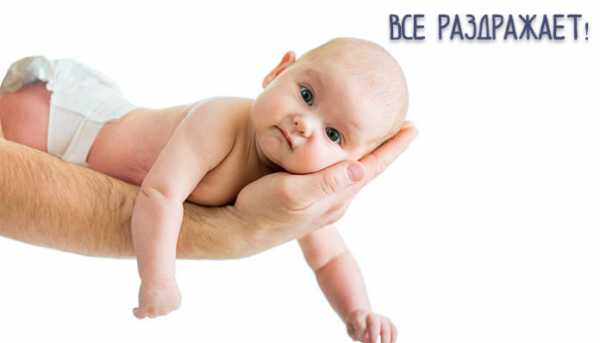
At an early age, when a child spends most of his time in a diaper, he may experience irritation on his bottom. Often, such redness can occur from contact of delicate skin with feces. Especially if the baby’s stool was disturbed, then constant exposure could cause the most negative reaction on the skin. Don’t panic right away; you need to understand what to apply and how to treat delicate skin.
Irritation from diarrhea in a child
Until about one year of age, a child’s stool may be loose and this is normal, but it happens that the child clearly has diarrhea. You could introduce a new product into your diet (if breastfeeding) or into your baby’s diet, which became the cause of the stool, but this is not the only possible reason. In general, there are several reasons for bowel dysfunction in a child:
- Food allergies;
- Changing formula or abrupt transition from breastfeeding to artificial feeding;
- The appearance of teeth.
In this case, it is important to exclude anything that affects the process itself and, of course, it is worth addressing the child’s digestion and eliminating the problem. Depending on the cause, you need to either eliminate the allergen, make the transition between feedings calmer, or eliminate diarrhea with the help of special medications. In any case, your pediatrician will help you both choose a medicine for diarrhea and determine what exactly caused it.
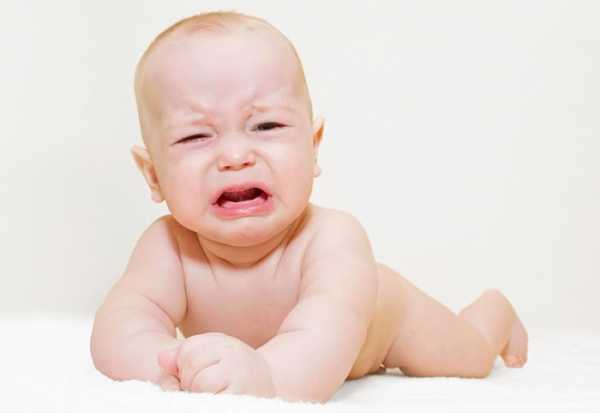
How to treat irritation from diarrhea in a child
The very first and correct action in such a situation would be to create conditions under which the child comes into contact with feces for as little time as possible. This can become quite difficult because with diarrhea, the child's frequency of going to the toilet increases significantly. The main thing is that even a small appearance of feces should be eliminated quickly. Perhaps in such a situation it is worth switching from diapers to diapers (you can use disposable diapers) during the daytime, and checking the baby more often at night.
When a child experiences irritation on his bottom from diarrhea, you should be more careful about washing it. Wash all folds especially carefully and thoroughly and wipe them dry. You should wash your baby using baby soap. Laundry soap also works well, as it is the most natural. But with its frequent use, dry skin may occur. After washing, use baby moisturizer or diaper cream, also thoroughly lubricating the baby’s entire bottom and groin area.
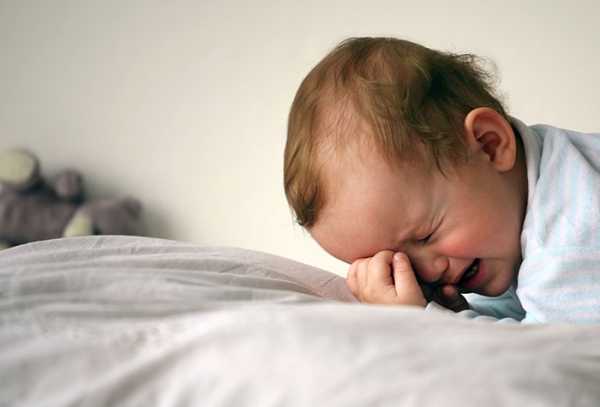
Itching and irritation
Of course, when a child has irritation on the bottom, it can be accompanied by itching and cause severe discomfort to the baby. Sometimes it happens that the child’s skin is so inflamed that washing and treating the child’s bottom with cream causes pain in the baby and, accordingly, crying, turning into hysterics. In this case, you should change the cream to a more complex composition (medicinal, recommended by your doctor) and take air baths more often.
To relieve a child's pain and treat irritation, medicinal ointments are well suited:
- Bepanten;
- Fenistil;
- Baneocin;
- Panthenol;
- Lesser-known creams, such as Sudocrem, Disetin, Levomekol, Drapolen, Eplan, Bubchen, can help relieve irritation.
- Regular zinc ointment is also very popular. It should also be applied to the child’s dry and clean skin.
- Many children get rid of unpleasant irritation on the bottom by washing with solutions of potassium permanganate or chamomile, string or calendula.
The last two methods are suitable for mild irritation and should be carried out very carefully. You need to be especially careful with potassium permanganate and know exactly the proportions for preparing the solution so as not to burn the baby’s skin and cause even more harm. When using herbal infusions, monitor for possible allergic reactions. Ideally, first conduct an allergy test by dropping the infusion on the inner bend of the elbow and observing the reaction. In the absence of any redness, you can safely wash your baby and take baths with infusions. It is only important after baths not to wash off anything with soap, blot the skin with a diaper, but do not rub it or leave it wet.
It’s good when, after such therapeutic washing, you wipe the baby’s bottom dry and let him be without a diaper. After a while, you can anoint the baby’s bottom with diaper cream and let it absorb. Also, for mild irritation, a bath can help, to which you need to add a decoction of chamomile or calendula, but remember about allergies.
If there is a problem of irritation from diarrhea on the baby’s bottom, it is worth increasing the number and duration of air baths. This way, the baby’s skin will breathe and there will be no greenhouse effect that occurs in the diaper and interferes with the healing of wounds. To have a positive effect on the baby’s skin, the air in the room should not be too warm or dry. Air baths should be done in a well-ventilated room with humidified air. But there should be no drafts in it!
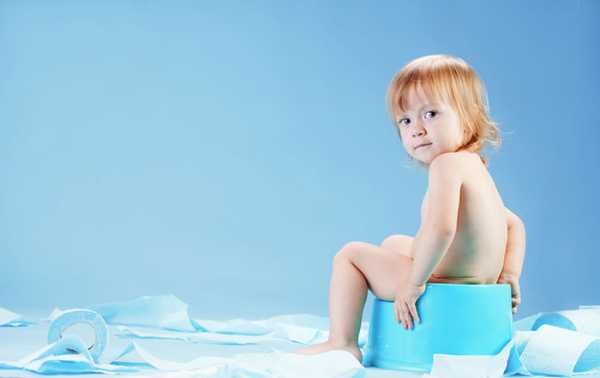
Irritation on the butt and teeth
It happens that no remedies help, because the diarrhea that causes the irritation does not go away for a long time. For example, if a bowel disorder is caused by the appearance of teeth in a child. In this case, you should consult a pediatrician. It is possible that in case of prolonged irritation, the doctor will select an ointment or cream with an antibiotic for the child, which can eliminate the irritation and help the baby. It should be applied according to your doctor's recommendations.
Some children find relief from irritation on their butt using baby powder. Also, many mothers note noticeable improvements when using baby oils or regular vegetable oil (it should be slightly heated and boiled). Natural oils, such as sea buckthorn, also help. Some mothers and grandmothers recommend using starch to treat irritation. But in this case, look at the degree of irritation (from slight redness to the appearance of painful red crusts on the skin) and the need to use methods.
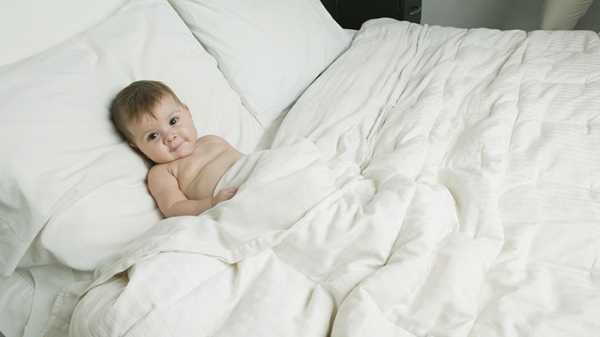
Irritation on a child's bottom from feces
When your child has irritation on his butt from poop, carefully monitor his behavior. Make sure that the baby does not put his hands on his butt and under no circumstances scratch the irritated areas.
Sometimes irritation on the butt is caused by bacteria or fungus found in stool. This can happen if a child has dysbiosis. In this case, there is no way to do this without a doctor - he will prescribe treatment for the intestines and can prescribe an ointment for the baby that has an antifungal effect. But again, you should not self-medicate, because dysbiosis is a fairly serious disease and any delay in treatment can cause serious consequences.
Photo of a newborn with sores on his butt
Diaper rash is a common occurrence caused by excess moisture.
This inflammation is called intertriginous dermatitis. In any folds where friction most often occurs and moisture can be retained, swelling and redness, a red rash, appear. In most cases, such symptoms appear in the buttocks area, since this is where there is the most heat and humidity. Due to excessive sweating, the protective layer of the skin is washed away, as a result of which it is quickly attacked by bacteria.
At the same time, constant friction arises due to the baby’s active movements. Thus the situation is getting worse. And if it’s also hot in the room, the mother wraps the child up in fear of catching a cold, washes her very often with soap, puts on diapers throughout the day, etc.
- all this is an ideal environment for the appearance of diaper rash in a newborn.
How do you know if it's diaper rash? Very simple. First, a pink spot with clear contours appears, then it turns red and cracks and even ulcers appear.
To avoid this, you must:
- Change diapers every 3-4 hours. Ideally, wear them only when necessary - for a walk, on a visit, to the store. At home you can get by with diapers.
- Maintain the room temperature no higher than 22 degrees.
- Do not wrap your child up unnecessarily.
- Bath your child every day, but no longer than 5 minutes, wiping each fold dry. Use soap only 2-3 times a week.
- If the child has areas of redness, treat with powder or zinc ointment after bathing.
- Have air baths regularly.
Diaper dermatitis in children
The phenomenon of diaper dermatitis in children is the second most common cause of redness and irritation on the buttocks.
The baby's skin in diapers does not breathe - ideal conditions are created there for the development of irritations.
The child walks around small and large, bacteria from the feces release ammonia from the urine, the pH of the skin increases, cracks form, and active reproduction of pathogenic bacteria begins.
In the case when a child has dysbiosis, the situation becomes even worse, as the number of bacteria and fungi increases. Thus, diaper dermatitis in children becomes protracted.
How to understand that it is diaper dermatitis? At first, the skin turns red in those places where the diaper covers the skin. Then, if proper care is not provided, ulcers may appear, candidiasis, staphylococcal infection, etc. may develop.
But if you provide proper care on time and apply special ointments, the symptoms will go away within a few days.
- The best thing to do is to stop wearing diapers until the symptoms go away. It is extremely rare to use them even after disappearance.
- When changing a diaper, be sure to take air baths for 10-15 minutes.
- Use zinc ointment.
- Do not use wet wipes during inflammation and irritation.
If the usual rules of care do not help, contact a dermatologist or pediatrician, he will advise how to treat a reddened butt.
We also recommend that you watch the video where Dr. Komarovsky talks about diaper dermatitis in children.
Seborrheic dermatitis in infants
It is a very unpleasant disease because it is difficult to control, and there is still no exact data on why it appears. Seborrheic dermatitis is more common in boys.
Doctors blame it all on lipophilic yeast fungi, which are an integral part of the skin microflora, like staphylococci, and for some reason, perhaps immune, or perhaps due to the period of activation of the sebaceous glands, begin to multiply.
At first, the baby's skin simply turns red, then scales begin to appear. Seborrheic dermatitis in a baby is not so easy to diagnose on your own, so if you have unclear symptoms, it is better to consult a doctor. Usually in newborns, symptoms disappear on their own after 6-7 months. But if symptoms appear in an older child, treatment will be required.
Zinc deficiency
In more rare cases, usually in premature babies, there is a red bottom, irritation, etc. occur against the background of zinc deficiency. This element is necessary for full growth, bone tissue development, regeneration and cell division, etc.
A growing body has a high need for zinc. And since premature babies are catching up with their peers at a rapid pace, the element is in short supply, against which skin dermatitis develops.
It happens that zinc deficiency also manifests itself against the background of poor nutrition and problems with the gastrointestinal tract.
How to understand that the problem is zinc deficiency? The first symptoms begin to appear at 3-4 months. Red spots appear on the buttocks, in the places where the skin comes into contact with the diapers. Then in their place bubbles and pimples appear, which begin to peel off.
In this case, you should immediately consult your doctor for treatment, because there is a high probability of developing a fungal infection. Self-medication is not allowed here under any circumstances.
Even a doctor, before prescribing treatment, will first send you for a blood test to determine the level of trace elements.
And based on the results, he will prescribe additional zinc for the child and zinc-containing products for the mother if the child is breastfed.
Allergic reaction
It is not uncommon for a baby to have a red bottom due to an allergic, namely contact allergy. Those. the mother follows all the rules of care, rarely uses diapers, gives air baths, etc., and the child develops a rash, redness and irritation. This means that there is some kind of allergen - it could be an allergy to diapers, or more precisely to their filling, powder, soap, cosmetics, etc.
In principle, identifying an allergy is not difficult, because the reaction will manifest itself exactly in the place where the allergen touches the skin. It is enough to simply exclude it, and all the symptoms disappear.
It is very important to select all care products so that they do not contain any dyes, flavors, fragrances, or preservatives.
Source: www.e-motherhood.ru
Source: https://detishki.ahuman.ru/u-novorozhdennogo-jazvochki-na-pope-foto/
kak-mazat-krem-pod-podguznik
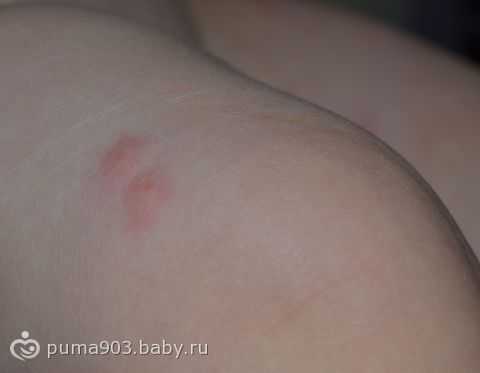
Friends! Please advise what to anoint or wash or speak to. Even in the maternity hospital, pimples appeared on the butt, and now there are pimples on the bottom of the pussy. At the RD they said prickly heat - apply bepanthen or ointment with zinc. I smear it.
A very delicate question. The child was prescribed an antibiotic and it did not work for him. I started having loose stools and didn’t go to the potty all day. We stopped drinking this antib. and they assigned us another one. And now the baby is irritated.
Burns on the butt after diarrhea. What to apply?
Day! We had diarrhea for 4 days, then I discovered that there was anise in the tea (dammit). I stopped giving it, of course the diarrhea didn’t go away right away, in the evening there was poop, but it was harder. By evening on.
My eldest Yaroslav has constant irritation on his bottom, the pediatrician said not to use diapers, but to use diapers, but I think wearing diapers will be even worse, because... After one pee you will have to change everything, the diaper absorbs it.
How to anoint the baby’s bottom? She blushed ((there is baby cream, Weleda diaper cream, Bepanten, Purelan 100 (well, it’s suitable for breasts), Bübchen baby oil, Mothercare baby powder (why is this powder needed at all), some other baby oil for herbs handed down from Russia, it’s called Vitaon? Or maybe some other remedy.
Red butt and diarrhea!
Hmmm, Masha has never had such a red butt! We have never encountered this problem in a year! And then suddenly. I have only two suspects: - tangerine (yesterday Masha played with.
we are 20 days old, 5 days struggling with a red bottom, I change the diaper often, I changed the company, first we used hagis for newborns, now we bathe in a series of chamomile in a series of chamomile, every evening I wipe my butt with wet wipes and diaper sensitive.
Girls, look at what you can do to help my baby, a couple of days ago her bottom turned red, our diapers are premium white diapers, we are in the fourth week, we opened a new pack on Friday, the first 90 pieces ran out, everything was ok.
The child has a very red bottom, nothing helps.
Hello girls, we have a problem. My daughter is 6 months old, we are on guard duty, we tried a little bit of complementary feeding, silent porridge and an apple. All was good. And now for 5 days we have had a red bottom, just terrible irritation.
Good afternoon, bb. Please tell me what product you use for diaper rash. For several weeks now my son has had a red butt in the place where the buns touch. I don’t know what to do anymore. I sprinkled it with powder, smeared it with bepanthen and...
Category: First aid
Similar articles:
Red brush, medicinal properties and contraindications.
Bleeding during menopause causes red blood
First aid for a child with a wasp or bee sting - how to relieve swelling and fever
SOS situation: what to give a child in case of poisoning and vomiting to alleviate the condition
First aid for a child with burns from fire, boiling water, chemicals
